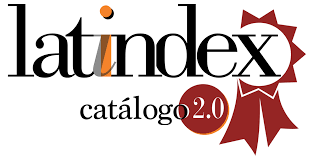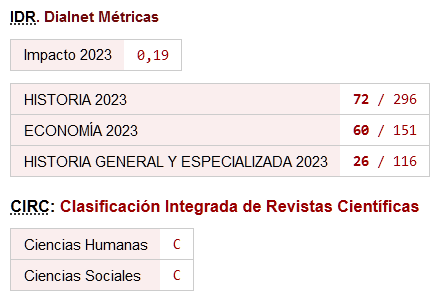Pacioli's De scripturis in the Context of the Spread of Double entry Bookkeeping
DOI:
https://doi.org/10.26784/issn.1886-1881.v1i1.243Palabras clave:
contabilidad, Historia, Pacioli, partida doble, práctica contableResumen
El presente trabajo examina y pone en duda, a la luz de las evidencias presentes, algunas nociones ampliamente aceptadas en relación con el uso y expansión de la partida doble durante los primeros siglos de su existencia. De esta manera, el autor expresa su opinión de que no cree que los libros impresos y, en particular, la Summa de Luca Pacioli, ejercieran una gran influencia directa en la divulgación de este sistema, como generalmente se cree. En relación con esta última obra, y entre otras razones, porque piensa que muy pocos mercaderes la adquirirían al no conocer ni siquiera el nombre de Pacioli, que era un gran matemático y humanista, muy conocido en los círculos intelectuales, pero probablemente desconocido en el mundillo mercantil. Pocos comerciantes podrían imaginar, por otra parte, que el volumen contenía un capítulo dedicado a la teneduría de libros. Aparte de ello, no se estima que dicho capítulo De scripturis enseñe la partida doble de la forma práctica y eficaz que los mercaderes precisaban, sobre todo por la falta de un supuesto práctico que mostrase la disposición y forma de redactar los asientos en el diario y el mayor. Por añadidura, el formato y dimensión del volumen tampoco contribuían a hacerlo tan manejable como requería una obra de consulta que debía estar siempre a mano en el despacho del mercader. A la vista de estas consideraciones, el autor concluye que no parece que la Summa pudiera influir grandemente de forma directa en el conocimiento de la partida doble que pudieran tener los comerciantes. En cambio, cincuenta años después de su publicación sí influyó decisivamente en la redacción de los tres siguientes libros que aparecieron en las década de los 1540, uno italiano, el de Manzoni, otro belga, el de Ympyn, y el último inglés, el de Mellis. Descartados, pues, los libros impresos como principal vehículo de divulgación directa de la contabilidad por partida doble entre los mercaderes, el autor se plantea el interrogante de cuáles fueron las vías de difusión del nuevo sistema: piensa que esta difusión debió de que tener lugar a través de tres distintos cauces: los tratados impresos de contabilidad, pero como medio indirecto de enseñanza de la partida doble, es decir, no a los propios mercaderes, sino a los maestros de materia mercantil; la movilidad de mercaderes, tenedores de libros y aprendices, que se desplazaban de un país a otro para conocer mejor su oficio; y, finalmente, los maestros y las escuelas comerciales. A este respecto, se ofrecen en el artículo diversos ejemplos de estos tres cauces, haciendo especial hincapié en el de la traslación de mercaderes y aprendices. Por último, el autor pone en tela de juicio la exactitud de la creencia bastante extendida de que la partida doble era ampliamente usada en Europa ya durante el siglo XVI. El opina que es posible que fuera bastante conocida, mucho más en el siglo XVII que en el XVI, pero que pocos mercaderes fuera de Italia la utilizaban, y que buena parte de ellos, o eran italianos o habían hecho allí su aprendizaje.
Descargas
Citas
Besta, F. (1929): La R agioneria, 2nd ed., Milan, vol.3.
Brown, R. (ed.) (1905): A history of accounting and accountants,Edinburgh.
Brulez, W. (1959): De firma Della Faille end e internationale handle van Vlaamse firma's in de 16e eeuw, Brussels.
Coornaert, E. (1961): Le Français et le commerce international a Anvers: fin du Xve XVle siecle,Paris.
Dafforne, R. (1635): The merchants mirrour, London.
Denucé, J. (1934): Inventaire des Affaitadi banquiers italiensa Anvers de I'annee 1568, Antwerp.
Favier, J. (1998): Gold and Spices (translated by Caroline Higgitt), New York, London.
Groote, H .L. V. de (1967-68): De zestiende -eeuwse Antwerpse schoolmeesters (reprint of articles in Bejdragen tot de geschiedenis inzonderheid van het oud Hertogdom Brabant),vol.s 50 and 51.
Houtte, J. van (1977): An economic history of the Low Contries,800-1800, London
Marshall, R.K. (1999): The local merchants of Prato, Baltimore & London.
Mun, T. (1664): England's treasure by forraign trade..., London.
Penndorf, B. (1913): Geschichte der Buchhaltung in Deutschland, Leipzig.
Pilla, F. (1974): "Il bilancio di esercizio nelle aziende private veneziane",Studi veneziani, vol.16.
Ramsay, G.D. (ed.) (1962): John Isham: mercer and Merchant Adventurer,Northampton.
Richardson, B. (1999): Printing, writers and readers in Renaissance Italy,Cambridge.
Roseveare, H. (ed.) (1987): Markets and merchants in the late seventeenth century,Oxford.
Rowland, I.D. (1998): The culture of the High Renaissance,Cambridge.
Smedt, O. de (1954): De Engelse Natie te Antwerpen in de Ibe eeuw(1496- 1582), Antwerp, , vol.2.
Stevelinck, E. (1992) : "Qui peut avoir traduit en Anglais le premier livre de comptabili té paru en Français?", De Gulden Passer, vol.70.
Tucci, U. (ed.) (1990): Benedetto Cotrugli Raguseo: II Libro dell'arte di mercatura,Venice.
Voet, L. (1969-1972): The Golden Compasses, Amsterdam, , vol.2.
Wee, H. van der (1963): The growth of the Antw erp market and the European economy (fourteenth -sixteenth centuries, The Hague.
https://doi.org/10.1007/978-94-015-3878-7
Yamey, B.S. (1959): "Some seventeenth and eighteenth century double -entry ledgers", Accounting Review, vol.34; reprinted in Essays on the history of accounting,New York, 1978.
Yamey, B.S (1960): "A seventeenth century double -entry journal", Accountancy, November; reprinted in Essays on the history of accounting, New York, 1978.
Yamey, B.S(1979): "Oldcastle, Peele and Mellis: a case of plagiarism in the sixteenth century" , Accounting and Business Research, vol.9; reprinted in Further essays on the history of accounting,New York & London, 1982. https://doi.org/10.1080/00014788.1979.9729160
Yamey, B.S (ed.) (1994): Luca Pacioli: Exposition of double entry bookkeeping, Venice1494, Venice.
Descargas
Publicado
Cómo citar
Número
Sección
Licencia
Derechos de autor 2022 Basil S. Yamey

Esta obra está bajo una licencia internacional Creative Commons Atribución-NoComercial-CompartirIgual 4.0.










